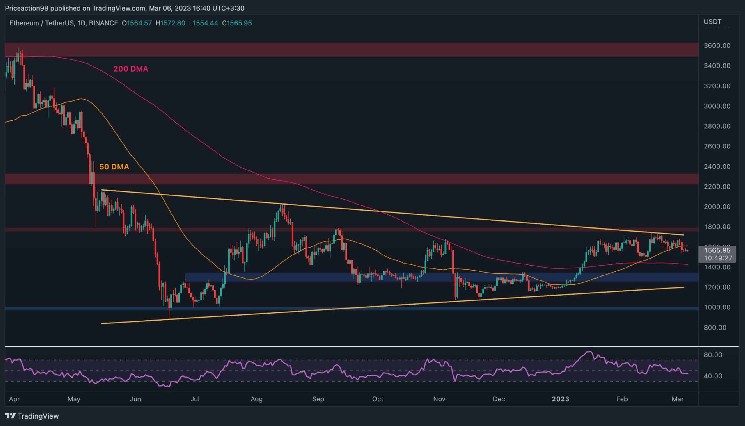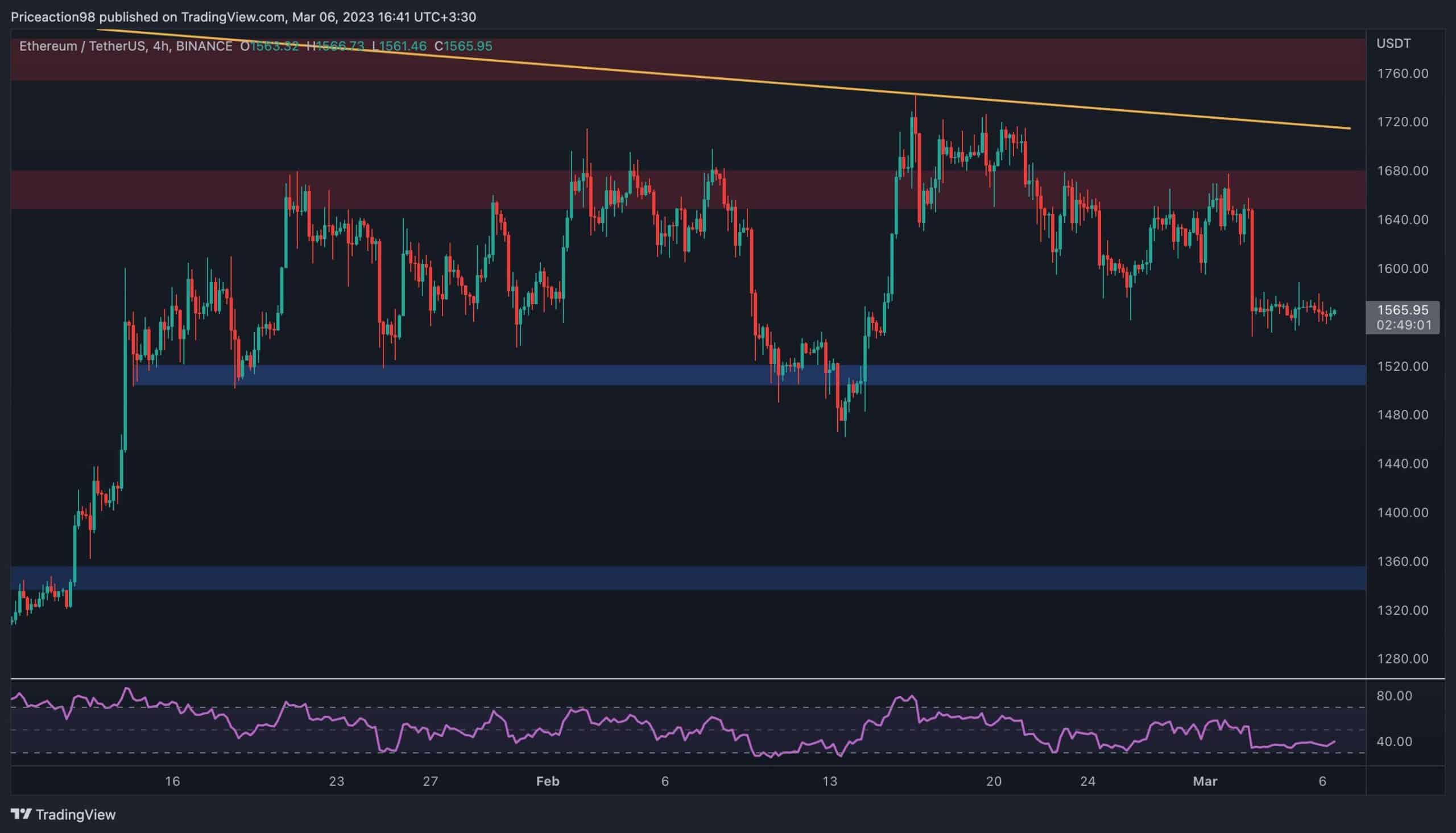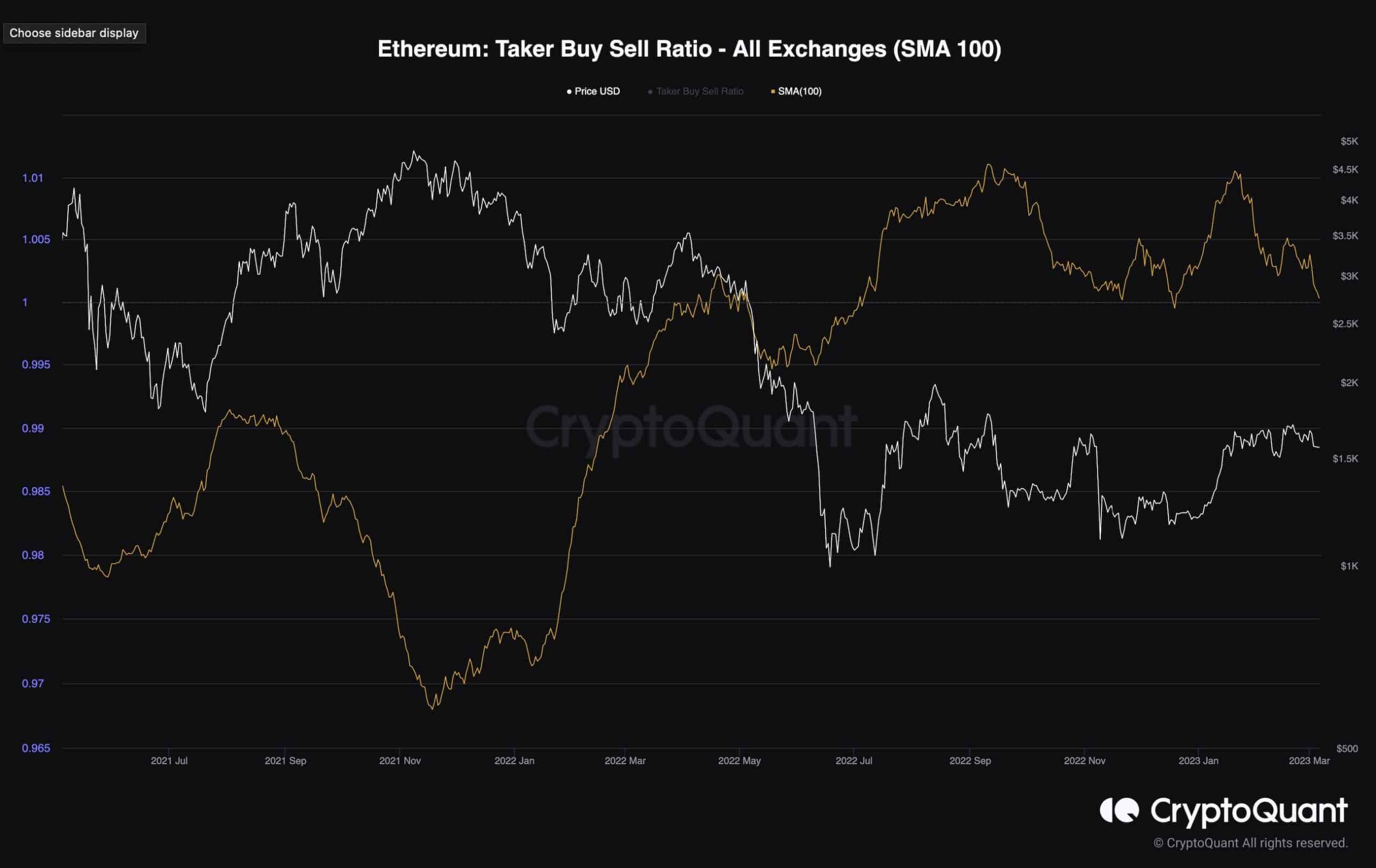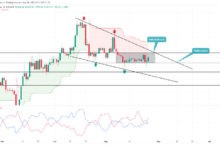ETH Risks Falling to $1500 if Bearish Sentiment Intensifies (Ethereum Price Analysis)

Ethereum’s price action has been very choppy in recent weeks after facing rejection from a significant resistance. However, there are multiple levels that could provide support and hold the price in the event of a deeper pullback.
Technical Analysis
By: Edris
The Daily Chart
On the daily chart, the price was rejected from the $1800 level and the higher boundary of the large symmetrical triangle pattern earlier in February. It has since broken below the 50-day moving average, located around the $1600 mark.
Currently, the price is consolidating below the broken MA and is yet to show an impulsive move after the bearish breakout. If the cryptocurrency fails to reclaim the broken 50-day moving average, the 200-day moving average, trending around the $1400 level, could be the next support, followed closely by the $1300 static zone.
On the other hand, a break back above the 50-day moving average would likely lead to an eventual breakout above the symmetrical triangle and a bullish rally in the short term.

The 4-Hour Chart
Looking at the 4-hour timeframe, it is evident that the price has been oscillating in a very tight range following an impulsive rejection from the $1650 resistance level a few days ago. $1500 seems likely to be tested in the short term, and if it fails to hold the market, the price could plunge toward the next support area, which is located around the $1350 mark.
The RSI indicator is also moving sideways, but it is still showing values below 50%, which points to the bearish momentum and further boosts the probability of a bearish continuation in the coming days.

Sentiment Analysis
Ethereum Taker Buy Sell Ratio (SMA 100)
As Ethereum’s price has been consolidating below significant resistance levels in the past few weeks, it would be useful to evaluate the futures market sentiment to gather further insights into what the market would do next.
The Taker Buy Sell Ratio is one of the most useful metrics to achieve this, as it measures whether the bulls or the bears are currently executing their trades more aggressively. Values above one indicate dominant buying pressure, while values below 1 are associated with negative sentiment.
This metric has been trending down for the last few weeks, indicating that the buying pressure is fading in the futures market, and the recent consolidating price action also validates this interpretation.
Yet, the metric is currently approaching the 1 threshold, and a drop below would mean that the bears are in control once more, which could lead to a price decline in the coming weeks if this trend continues.







 Bitcoin
Bitcoin  Ethereum
Ethereum  Tether
Tether  USDC
USDC  TRON
TRON  Dogecoin
Dogecoin  Cardano
Cardano  Bitcoin Cash
Bitcoin Cash  Chainlink
Chainlink  LEO Token
LEO Token  Stellar
Stellar  Litecoin
Litecoin  Hedera
Hedera  Monero
Monero  Dai
Dai  OKB
OKB  Cronos
Cronos  Ethereum Classic
Ethereum Classic  Gate
Gate  Cosmos Hub
Cosmos Hub  VeChain
VeChain  Algorand
Algorand  KuCoin
KuCoin  Stacks
Stacks  Tether Gold
Tether Gold  Theta Network
Theta Network  Zcash
Zcash  IOTA
IOTA  Tezos
Tezos  TrueUSD
TrueUSD  NEO
NEO  Polygon
Polygon  Decred
Decred  Dash
Dash  Ravencoin
Ravencoin  Zilliqa
Zilliqa  Qtum
Qtum  Synthetix Network
Synthetix Network  Basic Attention
Basic Attention  0x Protocol
0x Protocol  Siacoin
Siacoin  Holo
Holo  DigiByte
DigiByte  Nano
Nano  Enjin Coin
Enjin Coin  Status
Status  Ontology
Ontology  Waves
Waves  Hive
Hive  Lisk
Lisk  Pax Dollar
Pax Dollar  Steem
Steem  BUSD
BUSD  Numeraire
Numeraire  NEM
NEM  Huobi
Huobi  OMG Network
OMG Network  Bitcoin Gold
Bitcoin Gold  Ren
Ren  Augur
Augur  Bitcoin Diamond
Bitcoin Diamond